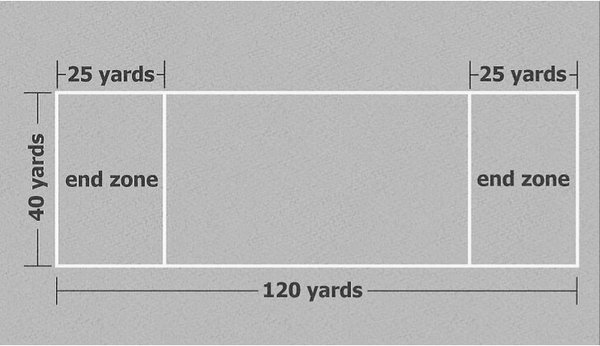Lesson
Welcome to Ultimate Frisbee!
This lesson is designed to introduce you to the exciting world of Ultimate Frisbee! Whether you've seen it played before or are completely new to the sport, this guide will cover the basic rules, the field layout, and the core concepts. Get ready to learn and have some fun!
Ultimate Frisbee is a non-contact team sport played with a flying disc (Frisbee). The objective is to score points by passing the disc to a teammate in the opposing end zone. Players cannot run with the disc, so teamwork, throwing skills, and strategic movement are essential.

The Spirit of the Game
One of the most unique aspects of Ultimate Frisbee is its reliance on "Spirit of the Game." This means that fair play, respect for opponents, and self-officiating are paramount. There are no referees; players are responsible for making their own calls and resolving disputes.
Always strive to be fair and honest, even when it's to your disadvantage. Understand the rules and be willing to discuss calls calmly and respectfully. The "Spirit of the Game" is what makes Ultimate Frisbee such a positive and enjoyable sport.
The Playing Field
The Ultimate field is rectangular with end zones at each end. Here's a breakdown of the dimensions:
- Length: 70 yards (64 meters)
- Width: 40 yards (37 meters)
- End Zones: 20-25 yards (18 meters) deep
Think of it like a football field, but wider and shorter, with the end zones being of significant depth.

Basic Rules: Movement & Possession
Here are some of the fundamental rules of Ultimate Frisbee:
- No Running with the Disc (Traveling): Once you catch the disc, you must establish a pivot foot and cannot move it while holding the disc. You can only rotate on your pivot foot.
- Stalling: The thrower has 10 seconds to throw the disc. A defender (the "marker") counts aloud ("Stalling 1... Stalling 2...") to enforce this rule. If the thrower hasn't released the disc by "Stalling 10," it's a turnover.
- Turnovers: The disc changes possession if a pass is incomplete (dropped, intercepted, knocked down, or goes out of bounds), or if the thrower is stalled.
- Out-of-Bounds: If the disc lands out of bounds, or if a player catches the disc while any part of their body is touching out of bounds, it's a turnover at the point where it went out.
- Non-Contact: Ultimate Frisbee is a non-contact sport. Picks, screens, and intentional physical contact are not allowed.
These rules are crucial for understanding gameplay. If you have questions about any of these rules, don't hesitate to ask the AI Tutor for clarification!
Scoring
A point is scored when a player catches the disc in the opposing team's end zone. After a goal is scored, the teams switch directions and the team that scored pulls (throws) the disc to the other team to start the next point.
Games are typically played to a predetermined number of points, such as 15 or 17, and often have a time cap. The first team to reach the target score wins, unless time expires first.
Basic Throwing Techniques
Mastering a few basic throws is key to success in Ultimate. Here are two fundamental throws:
- Backhand: This is often the first throw beginners learn. Grip the disc with your thumb on top and fingers underneath. Bring the disc across your body and flick your wrist to release.
- Forehand (or Flick): Grip the disc with your index and middle fingers along the rim, and your thumb on top. Extend your arm out to the side and flick your wrist to release.
Practice these throws with a partner. Focus on accuracy and consistency. Start close and gradually increase the distance as you improve.
Basic Catching Techniques
Catching is just as important as throwing! Here are two common catching techniques:
- Pancake Catch: Use both hands to clap the disc between them, like catching a pancake. This is effective for catching discs at chest level or lower.
- One-Handed Catch: Reach out with one hand and secure the disc. This is useful for catching discs that are high or far away.
When catching, try to give with the disc, absorbing the impact to avoid drops. Keep your eye on the disc at all times!
Practice Drills
To improve your throwing and catching skills, try these simple drills with a partner:
- Throwing and Catching at a Distance: Stand 10-15 yards apart and practice throwing backhands and forehands. Focus on accuracy and consistency. Gradually increase the distance as you improve.
- Moving Catch Drill: Have your partner throw the disc slightly ahead of you while you run to catch it. This simulates game-like situations.
- Pivot Practice: Practice catching the disc and immediately establishing a pivot foot. Rotate on your pivot foot while looking for a teammate to throw to.
Consistent practice is essential for developing your skills and becoming a better Ultimate player.
Core Concepts: Cutting & Clearing
Understanding basic offensive movement is crucial for creating scoring opportunities. Two key concepts are cutting and clearing:
- Cutting: A "cut" is a quick, decisive run by an offensive player to get open and receive a pass. Cuts should be sharp and angled, aiming to create separation from the defender.
- Clearing: After making a cut, if you don't receive the disc, it's important to "clear" out of the throwing lane, creating space for other players to make cuts.
These concepts help to keep the offense moving and create opportunities for scoring.
Putting it All Together
Now that you have a basic understanding of the rules, the field, and some fundamental skills, try playing a simplified game of Ultimate Frisbee. Focus on applying what you've learned, and remember to have fun!
Start with a small group and modify the rules as needed to make it enjoyable for everyone. The most important thing is to get out there and experience the sport!












